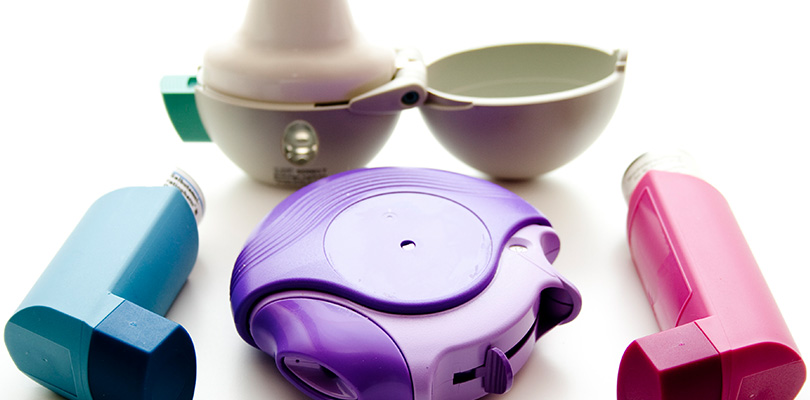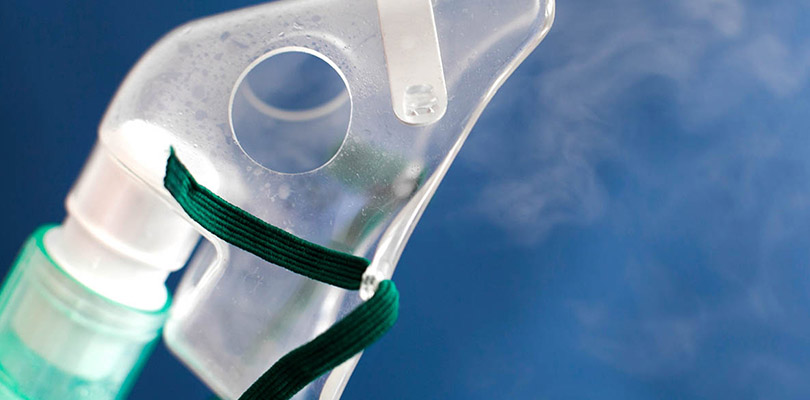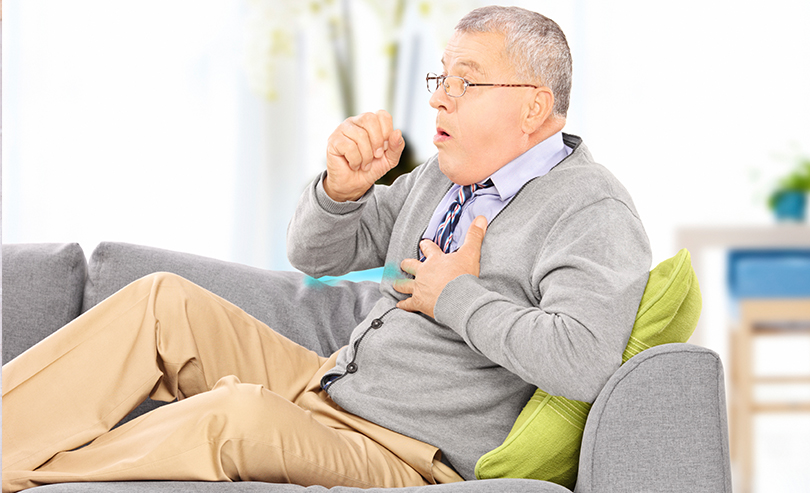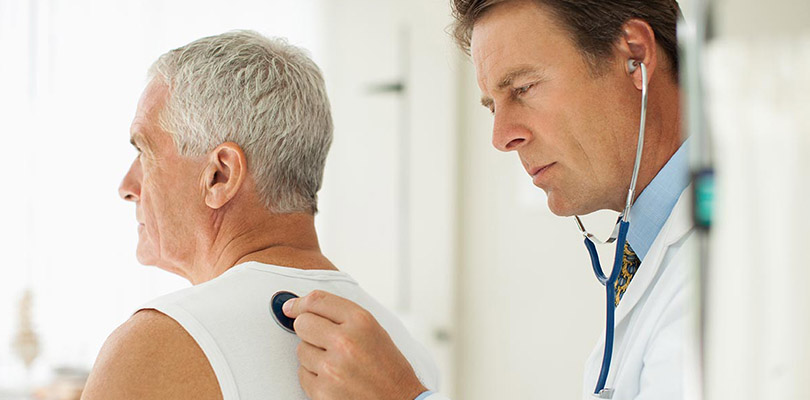Photo Credit: gpointstudio / istockphoto.com
Staying in Control of Your COPD With Good Planning and a Quick Response
The longer you live with COPD, the more likely you are to experience exacerbations, or sudden flare-ups of respiratory symptoms. Breathlessness, coughing and wheezing are the hallmarks of COPD exacerbations, and without swift and careful treatment, these symptoms could spiral out of your control.
COPD exacerbations are frightening and uncomfortable, but their effects stretch far beyond the attack itself. Research shows that the more exacerbations you experience, the more hospitalizations you’ll need, and ultimately, the shorter your life expectancy.
It follows that the better you can prevent exacerbations, the better off you’ll be in the long-run, but you should also learn how to expertly manage flare-ups in case you’re faced with the worst case scenario. The first step is to recognize the early signs and act quickly with the help of a comprehensive action plan.
Signs of an Exacerbation
During a COPD exacerbation, your airway and lung function changes quickly. You may suddenly have more mucus clogging your bronchial tubes, or the muscles around the airways may constrict dramatically, cutting off your air supply. In turn, you’ll experience:
- Breathlessness: either feeling like you can’t breathe deeply, or gasping for any air at all.
- More coughing: your body uses a cough to rid your lungs and airways of blockages and irritants.
- Wheezing: hearing a wheeze or whistling noise when you breathe means that air is being forced through a narrower passageway.
- Lots of mucus: you may begin to cough up more mucus, and it may be a different color than normal.
- Insomnia or fatigue: sleep disturbances and exhaustion can indicate that less oxygen is getting to your lungs and through your body.
- Cognitive difficulty: confusion, depression or memory lapses can mean that your brain is not getting enough oxygen.
Waiting to see if your symptoms improve is not an option; if you’re struggling to breathe and your symptoms are getting worse, you need to medicate appropriately, and right away.
Take These Steps to Restore your Breath
The first thing to do is consult your COPD action plan that you created with your doctor. This could be a comprehensive written document or something simple and straightforward, but in either case it should instruct you on what to do — and what not to do.
1. Relax Your Airways with Your Quick-Acting Inhaler
Relief or rescue inhalers work by sending a strong stream on concentrated medicine right to your constricted bronchial tubes. This should relax the tissues in your airways immediately, if not completely. Common short-acting bronchodilators are anticholinergics and beta2-agonists, and they will get to work more quickly if you use a spacer or nebulizer with your inhaler (be sure to practice using this device before you have a flare-up).
2. Reduce Inflammation with Oral Corticosteroids
Corticosteroids reduce swelling, and can help to widen your airways to let more air in and out of your lungs. If you’re not already including them in your long-term treatment plan, you’ll probably be prescribed corticosteroids for a week or more to get the inflammation under control.
Healthy foods can relieve COPD symptoms and boost your energy levels, help prevent respiratory infections, and thin secretions.
3. Get More Oxygen to Your Body with an Oxygen Tank
If you use supplemental oxygen at home, you’ll want to take advantage of the supply during an exacerbation. Follow the procedure laid out by your doctor, and try to relax to control your breathing.
4. If All Else Fails, Turn to Mechanical Intervention
In some cases, rescue medication, anti-inflammatory steroids, and oxygen therapy won’t bring symptoms back to a manageable state. In this case, you may need a machine to help you breathe through a process known as mechanical intervention.
If your home treatment is not bringing relief, don’t wait for things to get worse. Call an ambulance, or have a friend or family member make the call for you. Once you’re at the hospital, you may need an intravenous bronchodilator like theophylline to bring your symptoms under control. You may also need an IV to rehydrate your body and antibiotics to prevent respiratory infections like pneumonia (since your immune system may be compromised, and there’s greater risk for infection in a hospital).
Identifying Triggers to Avoid
Certain things can trigger COPD and make your current symptoms a lot worse. Some people find that COPD and high humidity are a recipe for flare-up, while others are irritated by perfumes and household cleaning solutions. Naturally, it’s better to avoid problems altogether than try to treat them, so take time to learn about your triggers and the best ways to sidestep them to avoid future exacerbations.
There are dozens of COPD triggers, but two in particular that tend to lead to problems:
Stay Away From Smoke
Cigarette smoking is the leading cause of COPD, and also the fastest way to an exacerbation. If you still smoke, it’s time to quit — even if you can’t reverse the damage done, you could relieve a lot of stress on your lungs and decrease your risk of dangerous flare-ups.
Second-hand smoke is another major COPD trigger, and not only from the end of a burning cigarette. Wood-burning fireplaces, campfires, barbecues and incense all send out plumes of irritating smoke, and depending on the type of fuel, it can be nearly as damaging to your lungs and airways as tobacco smoke. Stay far away from all burning materials, no matter how aromatic or comforting they may be.
Stay Clean and Healthy
Respiratory infections are common culprits behind COPD exacerbations; a simple virus can quickly turn into a breathless emergency, especially if you COPD symptoms are already giving you some problems. It’s vital to keep your body and environment clear and free of infection, which means taking extra precautions, especially during cold and flu season.
Acute bronchitis and pneumonia are the leading causes of infection leading to exacerbations, and they can develop from a relatively simple cold or flu. Get your annual flu shot, and if your doctor recommends, the pneumonia vaccine. If you do get sick, rest immediately and for as long as you need to recover.
Prevention and preparation can make the difference between an uncomfortable episode and a hospitalization, so talk to your doctor now about rescue medication to take in case you do come down with an illness that triggers your symptoms. Update your action plan periodically, as your medications change or your disease progresses, so you’re always ready to act if your symptoms become too much to bear.
Luckily, most people recover their breathing after taking the steps to supress their symptoms, even if they’ve been hospitalized. It’s important to stay calm, and if you feel overwhelmed, reach out for help right away.







